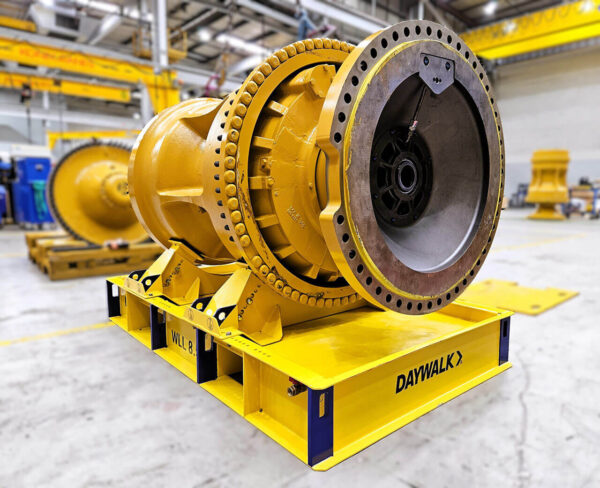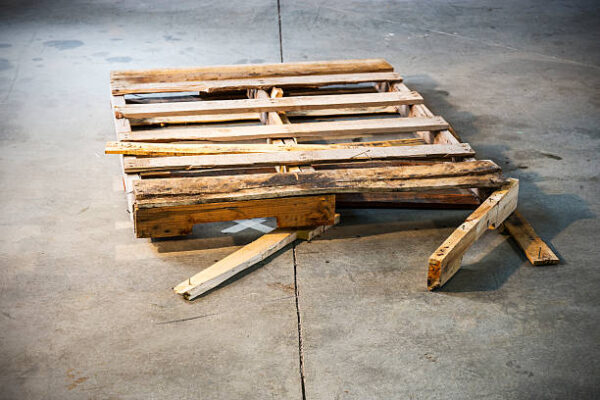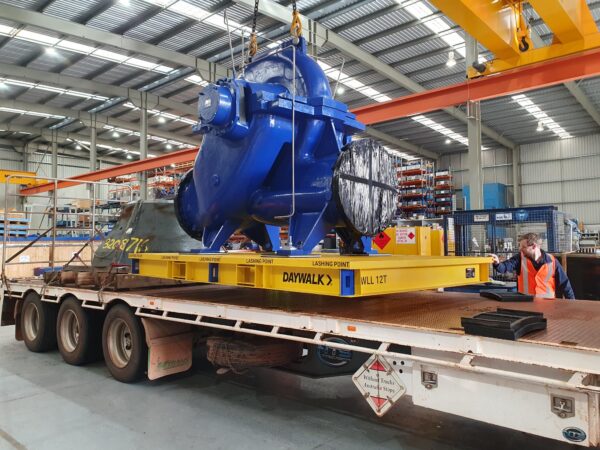Because of this, there are concerns about timber dunnage, blocks, and chocks. Is it possible for timber dunnage, blocks, and chocks to be purchased with engineer-rated SWL? Who assigns these ratings. Can an SWL be issued for timber blocks already in use with heavy equipment?
More to the point, are there alternatives to wood or timber?
Hardwood dunnage is typically strong, this is a given; however, there are differences from species to species or the type of hardwood. Timber is also susceptible to the effects of the elements due to being a natural resource.
The same applies to hardwood pallets – depending on the weather and climate, it can be common for hardwood to splinter or crack around pallet nails, which can potentially lead to greater damages for stock and pallet alike.
The answer to these concerns can be summed up in one phrase: plastic dunnage.
The initial investment for plastic dunnage will be higher than that of timber dunnage. However, plastic dunnage (also referred to as composite dunnage) will typically outlast timber dunnage by a considerable amount of time. The beauty of plastic dunnage’s strength is that an engineer can load test the product to acquire a full set of engineering reports.
Omni-tuff can issue a TDS (Technical Data Sheet) that outlines the pallet analysis, giving a predicted load rating for hardwood pallets and pine pallets.
Plastic pallets are often more popular, particularly in very hot and humid environments. While plastic or composite material will typically outlast timber, plastic pallets and (particularly) dunnage can be more slippery. It’s important to make sure that the dunnage picked – whether timber or plastic – is fit for purpose.
Another advantage of timber pallets over plastic pallets is that changing the configuration or design of the pallet is easy. By cutting different lengths and altering the nailing pattern, the timber pallet can be made to be a solid top deck, or manufactured with an extra bearer or bearers with extra bottom boards for added rigidity. The pricing for moulds of rotomolded – and injection-molded – plastic pallets is prohibitive, on the other hand; once there is a design in the marketplace for a plastic pallet, changes to the design is rare to come by.
Meanwhile, double-width pallets are available in timber, and are a good option for a reasonable value-for-money outcome. Double-width plastic pallets are not readily available. It would be possible to arrange a rotomolded unit, but an injection-moulded double width pallet isn’t likely.
If timber is the preferred option and requires compliance for exporting, the timber needs to be ISPM15 rated, which is commonly done via heat treating according to the standard. As well, if timber is not suitable for the requirements for double-width pallets, double-width steel pallets are also available. As with timber, steel pallets are more adjustable to specific requirements and load ratings.
In relation to Chain of Responsibility (CoR) where there is a distribution of responsibility across the supply chain, Omni-tuff has been receiving growing demand for engineer-rated steel pallets that are compatible with forklifts, pallet jacks or crane-lifts. These engineer-rated steel pallets are available in a number of different sizes and weight ratings.






